13 Exercises That Target Body Fat for Quick Results

Are you looking to blast body fat fast? If you want quick results in time for summer, focus on exercises that target body fat, says one expert. Lead trainer of Litesport, Anthony Crouchelli (CFSC, USA Boxing, and NCSF Certified) offers Body Network 13 exercises you can do to target body fat for quick results, ranging from cardio workouts to strength training moves.
Incline Walking
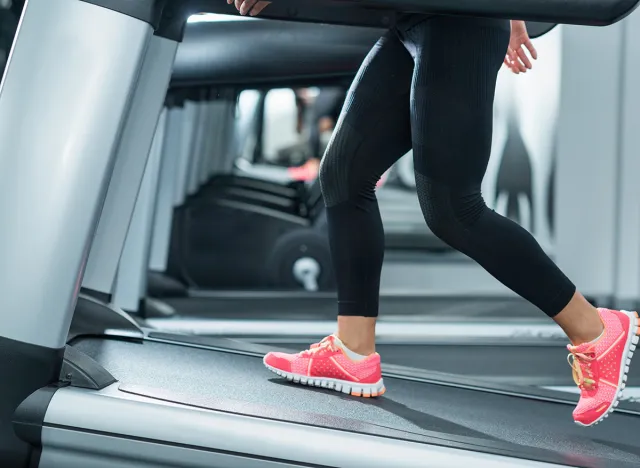
How: Using a treadmill, start walking at a gentle speed between 1 to 2.5 mph, with the incline at its highest setting. I normally recommend for someone new to the fitness space to try walking for 30 minutes with a light speed, and an incline of at least 12%. Advanced athletes can start between 2 to 3 mph range, and the highest incline setting available.
Why it's beneficial: Incline walking is a GREAT form of low impact cardio training, and also allows users who might not like "running" to be able to get their form of cardio in with a different format.
Jumping Rope
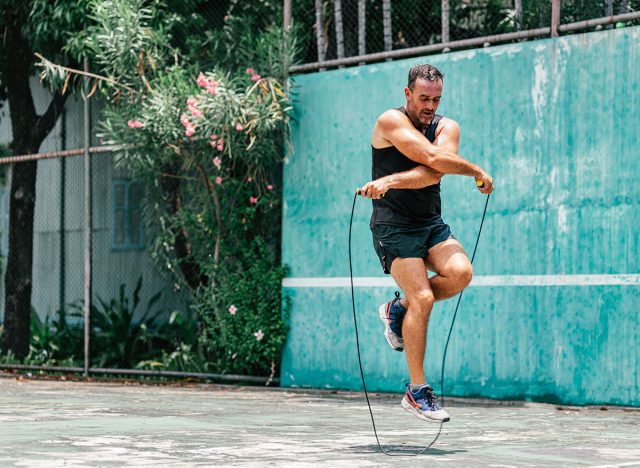
How: Grabbing a jump rope you want to think about RHYTHM with this one. Naturally hop in place for around :30 to set your tempo marker. From there take your time, and gradually add in the jump rope to the hopping pattern, and you are set up for success! I love either 5 sets of 1:00 continuous jumping, or :30 on, :30 off splits.
Why it's beneficial: Great low impact cardio training.
Kettlebell Swing
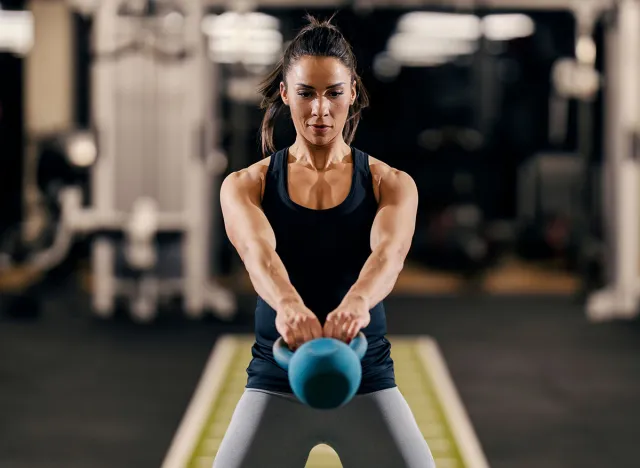
How: Grab the handle with both hands, keeping palms face down and hips square. Drive your hips back, allowing the kettlebell to swing between your legs, then drive the hips forward, allowing the momentum to drive the kettlebell to swing forward and all the way up towards the ceiling as you bring your arms up and overhead.
Why it's beneficial: Kettlebell swings have a TON of benefits, such as improved cardiovascular fitness, strength, and power. They're also a high intensity yet low impact workout that can burn a ton of calories in a short period of time, making them convenient for anyone with a busy schedule.
Farmers Carry
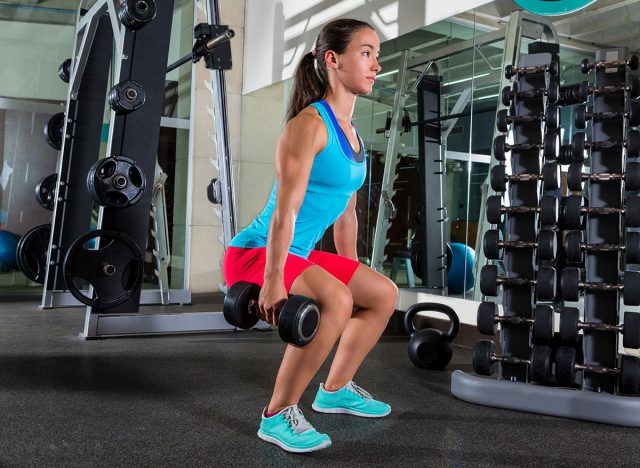
How: Squat down and grab a weight in each hand, engage the core and pull your shoulder blades down and back while standing back up, returning to an upright posture. Step forward and begin walking. Continue walking for your desired time or distance.
Why it's beneficial: Aside from developing the core, farmer carries improve grip strength and shoulder stability. This exercise also targets muscles in your arms, abs, shoulders, upper back, glutes, hips, and hamstrings.
Weighted Squats

How: Stand with feet hip or shoulder-width apart, hold a medium to heavy dumbbell in your hands. Shooting your hips back, begin to descend to your target point depth wise, and once activated engage your glutes, and return to the standing position.
Why it's beneficial: Tendons, bones and ligaments around leg muscles are strengthened, which helps to take weight off of your knees and ankles, consequently making them more stable and stronger. Some studies have also indicated that by strengthening the spine and lower body, it can boost bone mineral density
Deadlifts

How: Stand with feet hip-width apart and hold a dumbbell in each hand in front of thighs, palms facing body. Engage core and pull shoulder blades down and back. Keeping your arms straight, send your hips back and bend your knees slightly to lower both dumbbells down to the floor in front of your legs. Once you feel the stretch in the hamstrings squeeze your glutes, and stand upright to your starting position.
Why it's beneficial: Deadlifts will improve your back and core strength.
Thrusters
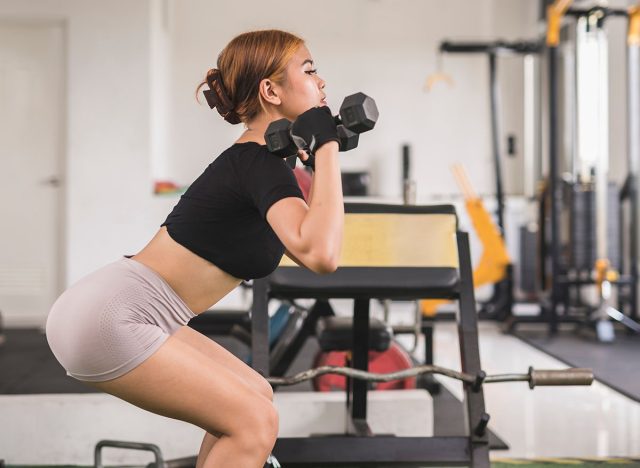
How: To do the dumbbell thruster hold two weights by your shoulders, with your palms facing. Drop into a squat, then push up and press the weights straight overhead until your arms are fully extended. Then lower the dumbbells back to the starting position
Why it's beneficial: Thrusters are a full-body movement that's useful in daily life. Thrusters help improve coordination, muscular endurance, and balance. They help you gain both upper and lower body strength by working the quadriceps, glutes, and shoulders.
Battle Ropes
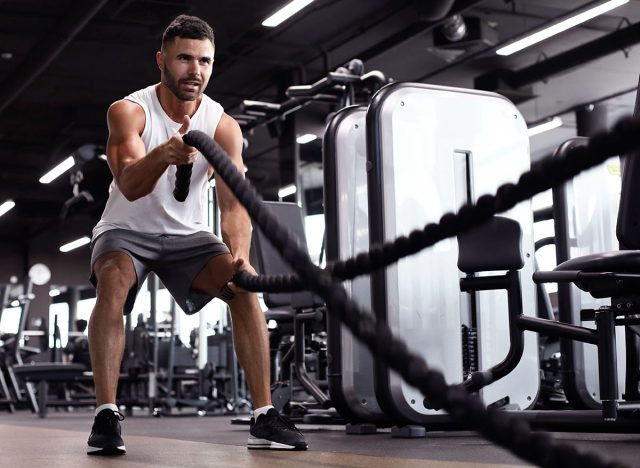
How: Grip the rope handles, with your thumb sitting on the rope itself as if you were giving yourself a thumbs up. Descend into a hinge based position, or squat hold position, and begin moving the ropes up, and down in an alternating pattern. Based on your experience you can explore different tempos, as well as different rope patterns.
Why it's beneficial: Battle rope exercises are great for building muscular strength, increasing cardiorespiratory fitness, and enhancing athletic performance. They're low impact and can be performed sitting down, so they're a great alternative to other cardio exercises
Walking Lunges

How: Step forward with your right leg, putting the weight into your heel. Bend the right knee, lowering down so that it's parallel to the floor in a lunge position. Pause for a beat. Without moving the right leg, move your left foot forward, repeating the same movement on the left leg
Why it's beneficial: Walking lunges strengthen the leg muscles as well as the core, hips, and glutes. You can also make walking lunges more challenging by adding weights or doing a walking lunge with a torso twist. Read on to learn more about the benefits of walking lunges and how to incorporate them into your fitness routine.
RELATED: 19 Arm-Toning Workouts for Women Looking to Achieve Sculpted Shoulders and Biceps
Mountain Climbers
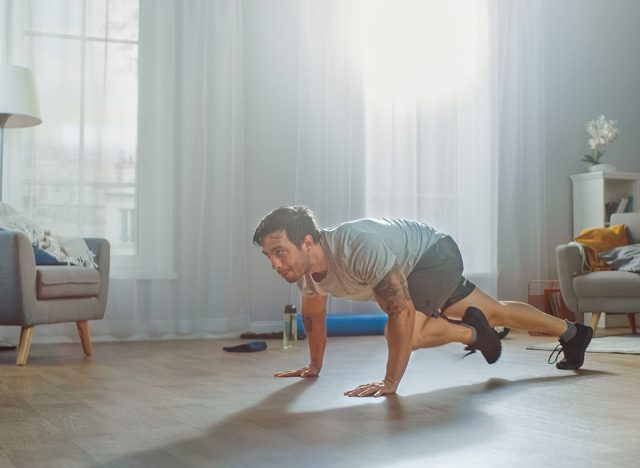
How: Start in a high plank position, wrists under shoulders, core engaged so body forms a straight line from head to heels. Bring the right knee in toward the left elbow, then return to the plank. Bring left knee in toward right elbow, then return to plank. Continue alternating for 30-40 seconds
Why it's beneficial: Mountain climbers are a great core exercise, that also challenges your conditioning, and cardio levels! Incorporate Mountain Climbers if you can into your programs as a great finisher at the end of your workouts.
Pushups
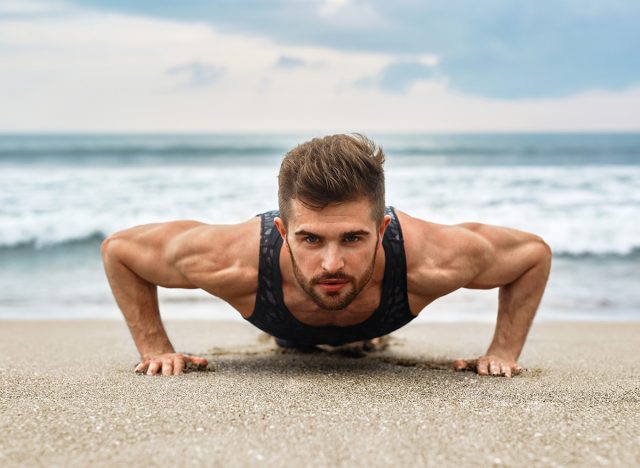
How: Holding a high plank position begins to descend towards the floor, thinking "chest to ground." Once you reach the "target position" press through your hands while engaging your core, and glutes, and return to the high plank starting position.
Why it's beneficial: Great low impact bodyweight upper body exercise to build strength! Push Ups are also a "go to" fitness assessment test exercise so it is always great to know these at all times.
Medicine Ball Slams
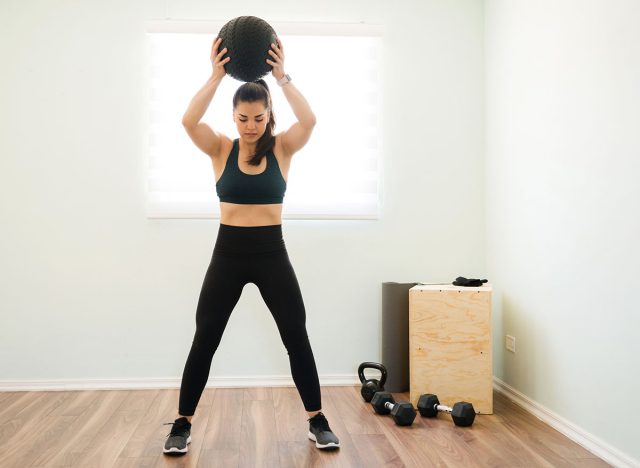
How: To practice medicine ball slams, stand with your feet shoulder-width apart, raise the medicine ball overhead, and throw it against the floor with as much force as possible. Let the ball bounce up to your hands or lift it off the floor, then repeat the full range of motion.
Why it's beneficial: One of the most important reasons to use medicine ball slams in your workout is to build overall strength. This simple movement requires most of your body and major muscle groups, including the legs, glutes, abs, shoulders, arms, and several back muscles.
RELATED: The Simple Best Exercise to Lose Weight, by Fitness Trainer
Medicine Ball Rotational Tosses
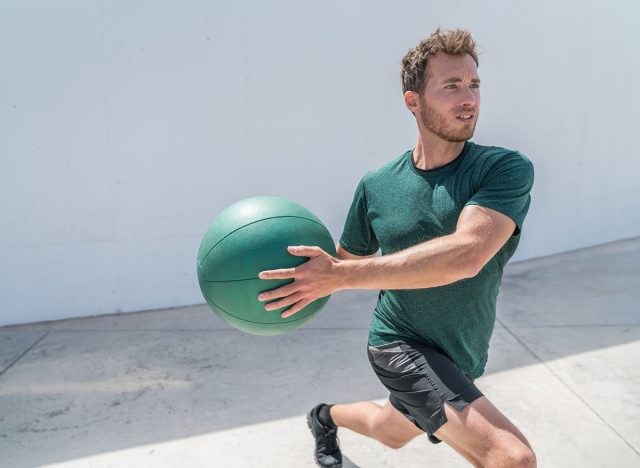
How: Stand about two to four feet away from the wall with a medicine ball in both hands and take the ball to your back hip. Then transfer your weight from the back hip to the front hip while rotating your hips to throw the ball explosively against the wall. Catch the ball with both hands, rest and repeat.
Why it's beneficial: Similar to Medicine Ball Slams, Medicine Ball Rotational Tosses are an excellent exercise to build rotational strength, as well as improve coordination.




